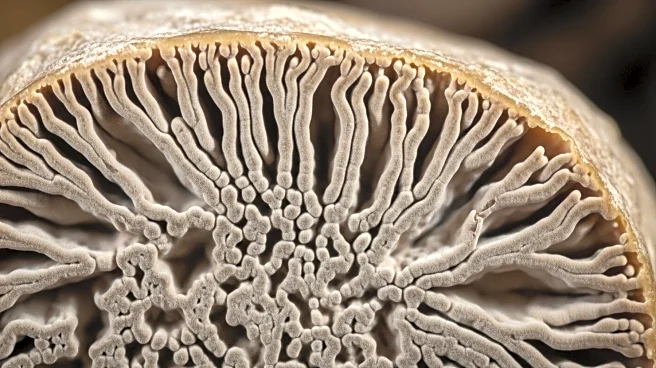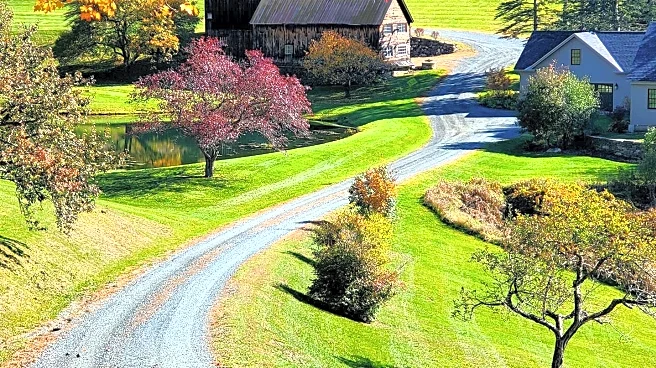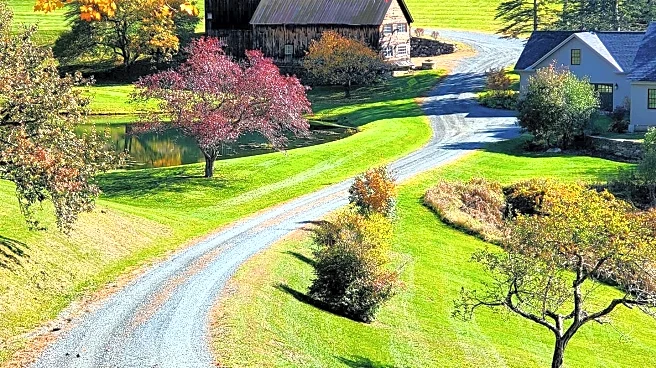What is the story about?
What's Happening?
Researchers have observed rapid evolutionary changes in fungi within cheese caves, specifically in the Bayley Hazen Blue cheese at Jasper Hill Farm, Vermont. The fungi, initially green, evolved to a white color due to a genetic mutation in the alb1 gene, which affects melanin production. This change is an example of 'relaxed selection,' where organisms adapt to dark environments by losing pigments. The study, led by Benjamin Wolfe and his team, highlights how fungi adapt to specific environments, offering insights into microbial evolution.
Why It's Important?
This discovery is significant for understanding microbial adaptation and evolution, which has implications for food security and health. Fungal adaptation can lead to crop losses, and understanding these processes can help mitigate such impacts. Additionally, the study provides a model for observing evolutionary changes in real-time, which can be applied to other fields such as antibiotic resistance and pathogen evolution. The findings also open possibilities for developing new cheese varieties with improved qualities.
What's Next?
The research team plans to further explore the domestication of fungi to create new cheese varieties with enhanced taste and texture. This involves continued collaboration with Jasper Hill Farm to refine the cheese-making process using the evolved fungi. The study also sets the stage for broader applications in agriculture and food production, potentially leading to innovative solutions for managing fungal impacts on crops.
AI Generated Content
Do you find this article useful?














